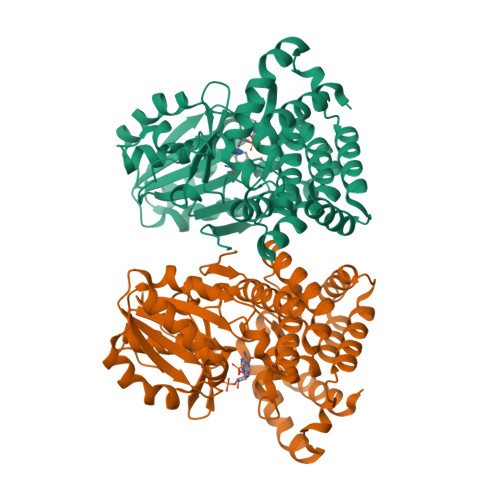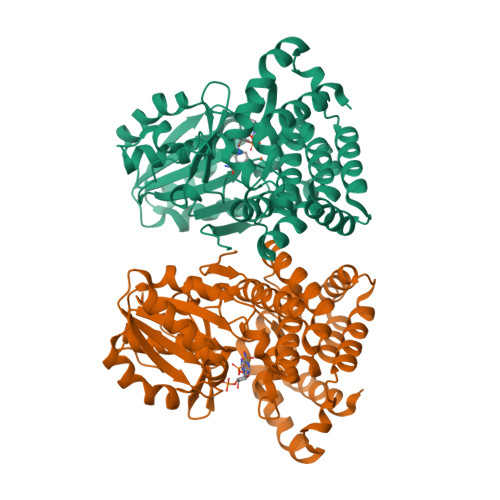The structure of an iron-containing alcohol dehydrogenase from a hyperthermophilic archaeon in two chemical states.
Larson, S.B., Jones, J.A., McPherson, A.(2019) Acta Crystallogr F Struct Biol Commun 75: 217-226
- PubMed: 30950821
- DOI: https://doi.org/10.1107/S2053230X19001201
- Primary Citation of Related Structures:
6C75, 6C76, 6C7L - PubMed Abstract:
An iron-containing alcohol dehydrogenase (FeADH) from the hyperthermophilic archaeon Thermococcus thioreducens was crystallized in unit cells belonging to space groups P2 1 , P2 1 2 1 2 1 and P4 3 2 1 2, and the crystal structures were solved at 2.4, 2.1 and 1.9 Å resolution, respectively, by molecular replacement using the FeADH from Thermotoga maritima (Schwarzenbacher et al., 2004) as a model. In the monoclinic and orthorhombic crystals the dehydrogenase (molecular mass 41.5 kDa) existed as a dimer containing a twofold noncrystallographic symmetry axis, which was crystallographic in the tetragonal crystals. In the monoclinic and orthorhombic asymmetric units one molecule contained iron and an NADP molecule, while the other did not. The tetragonal crystals lacked both iron and NADP. The structure is very similar to that of the FeADH from T. maritima (average r.m.s. difference for C α atoms of 1.8 Å for 341 aligned atoms). The iron, which is internally sequestered, is bound entirely by amino acids from one domain: three histidines and one aspartic acid. The coenzyme is in an extended conformation, a feature that is common to the large superfamily of NADH-dependent dehydrogenases that share a classical nucleotide-binding domain. A long broad tunnel passes entirely through the enzyme between the two domains, completely encapsulating the coenzyme.
Organizational Affiliation:
Department of Molecular Biology and Biochemistry, University of California, 530A Steinhaus Hall, Irvine, CA 92697-3900, USA.





















